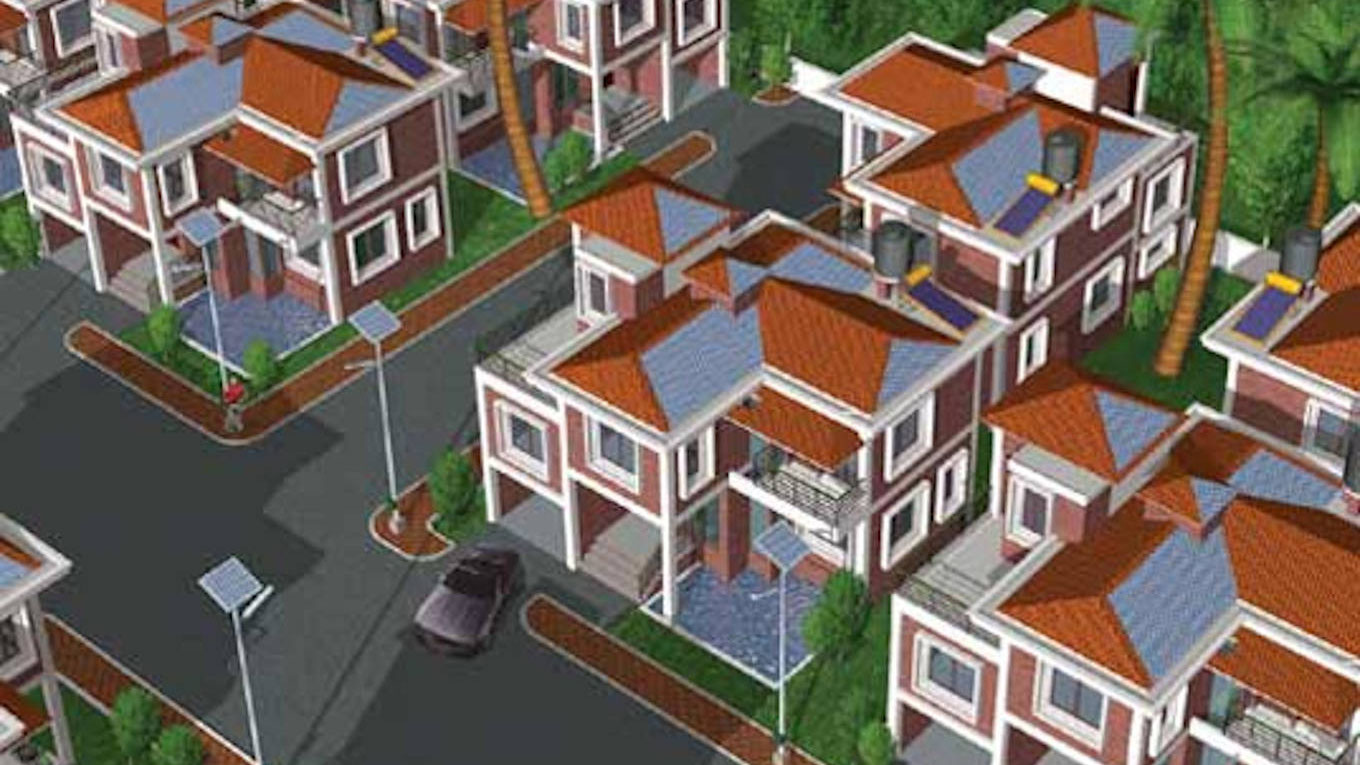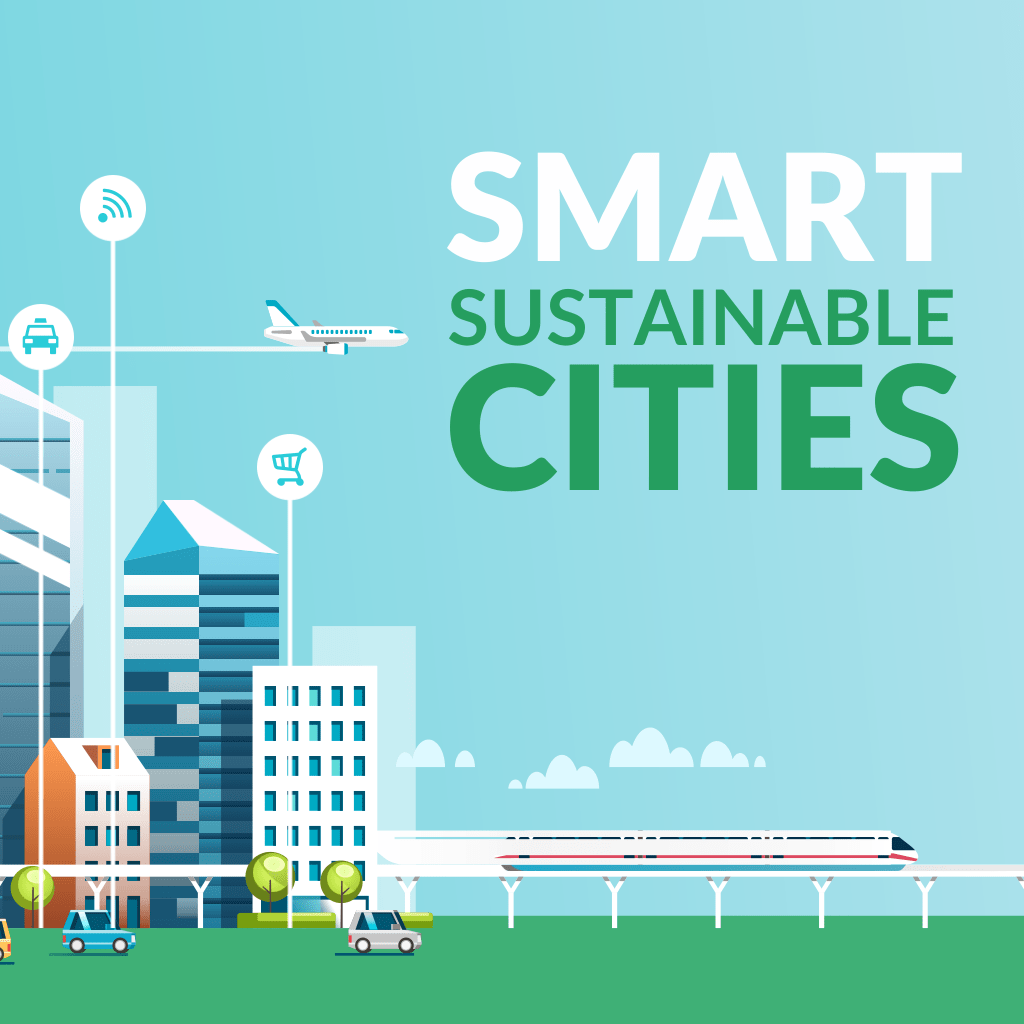Sustainable living refers to a lifestyle that aims to reduce an individual’s or community’s negative impact on the environment and promote the conservation of natural resources for the benefit of future generations. It involves making conscious choices and adopting practices that minimize waste, conserve energy and water, and promote the use of renewable resources.
Here are some key aspects of sustainable living:
- Energy conservation: Reducing energy consumption is crucial for sustainable living. This can be achieved by using energy-efficient appliances, improving insulation in homes, and utilizing renewable energy sources like solar or wind power.
- Waste reduction and recycling: Minimizing waste production and practicing recycling are important aspects of sustainable living. This includes reducing single-use items, composting organic waste, and recycling materials such as paper, plastic, glass, and metal.
- Water conservation: Conserving water is essential, especially in regions experiencing water scarcity. Installing low-flow fixtures, fixing leaks, collecting rainwater, and using water-efficient practices in gardening and landscaping are effective ways to reduce water consumption.
- Sustainable transportation: Opting for eco-friendly transportation methods, such as walking, cycling, or using public transportation, reduces greenhouse gas emissions and promotes sustainable living. Electric vehicles or carpooling are also sustainable alternatives to traditional gasoline-powered cars.
- Responsible consumption: Choosing products and services that are sustainably sourced, produced, and packaged helps reduce environmental impact. Supporting local businesses and buying second-hand or durable goods are examples of responsible consumption.
- Food choices: Adopting a sustainable diet involves consuming locally sourced, organic, and seasonal foods. Reducing meat consumption, supporting sustainable farming practices, and minimizing food waste are important aspects of sustainable food choices.
- Conservation and preservation: Protecting natural resources and biodiversity is crucial for sustainable living. This can be achieved through efforts such as planting trees, preserving natural habitats, and supporting conservation organizations.
- Education and awareness: Raising awareness about sustainable living practices through education and community engagement is vital. Sharing knowledge, participating in environmental initiatives, and encouraging others to adopt sustainable habits contribute to a more sustainable society.
By incorporating these practices into our daily lives, we can contribute to a more sustainable future and help preserve the planet for generations to come.
what is Implement Pedestrianization ?
Pedestrianization is the process of converting certain areas, typically urban spaces, from being vehicle-oriented to being pedestrian-friendly. It involves restricting or completely banning vehicular traffic in specific zones to create safer, more attractive, and sustainable environments for pedestrians. The main goal of pedestrianization is to prioritize the needs and safety of pedestrians, encouraging walking and other non-motorized modes of transportation while reducing air pollution, noise, and traffic congestion.
The implementation of pedestrianization can vary depending on the specific location and objectives, but it generally involves the following steps:
- Traffic Analysis: An assessment of the current traffic patterns and pedestrian flow in the area is conducted. This helps identify the most suitable locations for pedestrianization and potential challenges that need to be addressed.
- Planning and Design: Urban planners and architects work together to design the pedestrianized area. This includes designing pedestrian-friendly pathways, installing street furniture, improving lighting, and considering the integration of public transportation, such as buses or trams.
- Traffic Management: Diverting traffic away from the pedestrianized area requires careful planning. Alternative routes for vehicles may be designated to ensure smooth traffic flow in surrounding areas.
- Public Consultation: Stakeholder engagement and public consultation are crucial for successful pedestrianization. Input from local residents, businesses, and other community members is taken into account to address concerns and gain support.
- Implementation: Once the planning phase is complete, the actual pedestrianization measures are put into place. This can involve installing bollards, barriers, or gates to prevent vehicular access, modifying traffic signals, and introducing new pedestrian infrastructure.
- Monitoring and Adaptation: After implementation, continuous monitoring and evaluation are essential to assess the effectiveness of the pedestrianization efforts. Feedback from users and stakeholders helps identify areas for improvement and potential modifications.
Pedestrianization has numerous benefits, including creating more vibrant public spaces, reducing traffic accidents, improving air quality, enhancing local businesses (due to increased foot traffic), and promoting healthier lifestyles by encouraging walking and cycling.
Examples of successfully pedestrianized areas include Times Square in New York City, La Rambla in Barcelona, and Tiananmen Square in Beijing. However, it’s important to note that each pedestrianization project must consider the unique characteristics and needs of the specific location to achieve its intended positive outcomes.
when it required Implement Pedestrianization ?
The decision to implement pedestrianization in a specific area or city depends on various factors, including local conditions, urban planning strategies, transportation goals, and community engagement. Pedestrianization is typically considered when there is a desire to prioritize pedestrians and create a more pedestrian-friendly environment in urban areas. This could include converting certain streets or neighborhoods into car-free zones or implementing traffic calming measures to reduce vehicle access and create safer spaces for pedestrians.
The specific timing and requirements for implementing pedestrianization can vary greatly depending on the context. It may be initiated as part of a comprehensive urban redevelopment plan, in response to increased pedestrian activity, or as a way to address traffic congestion and pollution. It often involves careful planning, feasibility studies, and collaboration between government agencies, urban planners, transportation experts, and community stakeholders.
Since my knowledge cutoff is in September 2021, I don’t have information on recent or specific cases of pedestrianization that may have been implemented since then. It is advisable to consult local urban planning authorities or news sources to get the most up-to-date information on pedestrianization initiatives in a particular area.
who it required Implement Pedestrianization ?
Pedestrianization may be implemented in various situations and for different reasons. Here are some common factors that often contribute to the decision to implement pedestrianization:
- Promoting pedestrian safety: Pedestrianization is often considered in areas with high pedestrian activity to improve safety. By reducing or eliminating vehicle access, pedestrians can move more freely without the risk of accidents or conflicts with vehicles.
- Enhancing urban livability: Pedestrianization can create more attractive and vibrant urban environments by transforming streets and public spaces into pedestrian-friendly zones. It can encourage walking and cycling, promote social interaction, and support local businesses.
- Addressing traffic congestion and pollution: Pedestrianization can be part of a broader strategy to reduce traffic congestion and air pollution. By limiting vehicle access or redirecting traffic, cities can encourage the use of public transportation, cycling, and walking, leading to a more sustainable and environmentally friendly transportation system.
- Revitalizing city centers: In many cases, pedestrianization is implemented as a means of revitalizing city centers or historic districts. By creating car-free or pedestrian-focused areas, cities can attract more visitors, boost tourism, and create a vibrant and attractive atmosphere for residents and businesses.
- Encouraging active transportation: Pedestrianization supports the promotion of active transportation modes, such as walking and cycling, as alternatives to car travel. This can contribute to public health by encouraging physical activity, reducing dependence on cars, and improving air quality.
It’s important to note that the decision to implement pedestrianization is highly context-specific and depends on the unique characteristics and needs of each area. Local governments, urban planners, transportation experts, and community stakeholders collaborate to evaluate the feasibility and benefits of pedestrianization in a particular location.
where it required Implement Pedestrianization ?
Pedestrianization can be implemented in various locations depending on the specific needs and goals of a city or community. Here are some common areas where pedestrianization initiatives are often considered:
- City centers: Many cities opt to pedestrianize their central business districts or historic city centers to create a more pleasant and vibrant environment for pedestrians. This can involve converting streets into pedestrian-only zones or implementing traffic restrictions and pedestrian-friendly infrastructure.
- Shopping streets and commercial areas: Pedestrianization is often implemented in busy shopping streets or commercial areas to enhance the shopping experience, attract more customers, and promote economic vitality. Restricting or limiting vehicle access in these areas can create a more welcoming and enjoyable environment for shoppers.
- Parks and recreational areas: Pedestrianization can be implemented in parks, promenades, waterfronts, and other recreational areas to prioritize pedestrian and cyclist access, making these spaces safer and more enjoyable for recreational activities and leisure.
- Residential neighborhoods: Some residential neighborhoods may choose to implement pedestrianization measures to create safer and more walkable environments for residents. This can involve traffic calming measures, reducing vehicle speeds, or implementing pedestrian-friendly infrastructure like sidewalks and crosswalks.
- Tourist destinations: Pedestrianization can be implemented in tourist destinations to enhance the visitor experience, reduce traffic congestion, and create a more pedestrian-friendly atmosphere. This is often done in areas with high foot traffic, such as popular landmarks, cultural sites, or entertainment districts.
- School zones: Pedestrianization measures are commonly implemented around schools to create safer routes for children to walk or cycle to school. This can involve implementing traffic calming measures, designated pedestrian crossings, or restricted vehicle access during school hours.
It’s important to note that the decision to implement pedestrianization in a specific area depends on local considerations, such as the existing infrastructure, traffic patterns, community needs, and stakeholder involvement. Each location will have its unique set of factors that are evaluated when considering the implementation of pedestrianization.
how it required Implement Pedestrianization ?
Implementing pedestrianization typically involves a multi-step process that requires careful planning, coordination, and community engagement. Here is a general outline of the steps involved:
- Assess the feasibility: Conduct a feasibility study to evaluate the potential for pedestrianization in the target area. This includes analyzing traffic patterns, existing infrastructure, public transportation options, parking availability, and potential impacts on businesses, residents, and emergency services.
- Stakeholder engagement: Engage with key stakeholders, including local residents, business owners, community organizations, and transportation experts. Seek input, address concerns, and gather feedback to ensure that the pedestrianization plan aligns with the needs and desires of the community.
- Design and planning: Develop a detailed design and plan for pedestrianization. This includes determining the extent of the pedestrianized area, identifying pedestrian-friendly infrastructure requirements (such as sidewalks, crosswalks, seating areas, and lighting), and considering accessibility for people with disabilities.
- Traffic management: Devise a comprehensive traffic management plan to address the rerouting of vehicles and potential impacts on traffic flow. Consider alternative transportation options, public transit enhancements, and parking strategies to accommodate the changes.
- Policy and regulatory changes: Review and update relevant policies, regulations, and traffic laws to support the pedestrianization plan. This may involve revising zoning codes, parking regulations, and implementing new traffic management policies.
- Pilot projects and phased implementation: Consider piloting the pedestrianization plan on a small scale to test its effectiveness and gather real-world data. Based on the results, adjust the plan as necessary before proceeding with full-scale implementation. Implement the pedestrianization plan in phases, allowing for adjustments and fine-tuning based on feedback and monitoring.
- Infrastructure modifications: Make necessary modifications to the infrastructure to support pedestrianization. This may involve creating pedestrian-only zones, installing street furniture, improving sidewalks and crosswalks, adding bike lanes, and enhancing lighting and landscaping.
- Public awareness and education: Conduct public awareness campaigns to inform the community about the benefits of pedestrianization, changes in traffic patterns, and alternative transportation options. Educate residents, businesses, and visitors about the new rules and guidelines associated with the pedestrianized area.
- Monitoring and evaluation: Continuously monitor the pedestrianization project after implementation to assess its impact, address any issues or challenges that arise, and make necessary adjustments. Collect data on pedestrian activity, safety, economic indicators, and community satisfaction to evaluate the success of the pedestrianization efforts.
It’s important to note that the specific implementation process may vary depending on the local context and requirements. Local government authorities, urban planning departments, transportation agencies, and community stakeholders often collaborate throughout the process to ensure successful implementation of pedestrianization.
case study of Implement Pedestrianization ?
One notable case study of pedestrianization is the transformation of Times Square in New York City. Prior to its pedestrianization, Times Square was known for its heavy traffic congestion, limited pedestrian space, and chaotic atmosphere. In 2009, the New York City Department of Transportation (NYC DOT) initiated a pilot project to pedestrianize parts of Times Square, with the aim of creating a safer, more vibrant, and pedestrian-friendly environment.
The implementation process involved several key steps:
- Pilot project: In May 2009, the NYC DOT implemented a temporary pilot project that closed sections of Broadway to vehicular traffic, creating pedestrian plazas in Times Square. This allowed for an initial evaluation of the concept and gathering feedback from residents, businesses, and visitors.
- Public engagement: The NYC DOT conducted extensive public outreach and engagement efforts, including workshops, surveys, and public hearings, to gather input from various stakeholders. This helped shape the design and implementation plan for the pedestrianized Times Square.
- Design and infrastructure changes: Based on the feedback received, the pedestrian plazas were redesigned to include pedestrian-friendly infrastructure such as seating, landscaping, and improved pedestrian crossings. These changes aimed to create a more enjoyable and inviting space for pedestrians.
- Phased implementation: The pedestrianization of Times Square was implemented in stages. The initial pilot project was followed by temporary materials, such as paint and movable seating, to test the effectiveness of the design. Subsequently, permanent materials, including granite pavers and street furniture, were installed.
- Traffic management and alternative transportation: To address the rerouting of vehicular traffic, surrounding streets were modified to accommodate the changes. Additional measures were implemented to improve traffic flow, including new signal timing and turning restrictions. The project also emphasized alternative transportation options, such as increased pedestrian space, bike lanes, and improved access to public transit.
- Monitoring and evaluation: The NYC DOT conducted extensive monitoring and evaluation of the pedestrianized Times Square. They assessed factors such as pedestrian activity, safety, traffic flow, economic impact, and public perception. This data informed further adjustments and improvements to the design and management of the pedestrianized area.
The pedestrianization of Times Square has been widely regarded as a success. It has created a vibrant, pedestrian-friendly space that attracts both residents and tourists. Pedestrian activity has increased significantly, and the area has become a popular gathering place for events, performances, and public art installations. The project has also demonstrated the potential for pedestrianization as a means of revitalizing urban spaces and improving quality of life for residents and visitors alike.
white paper on Implement Pedestrianization ?
- Introduction
- Background information on the concept of pedestrianization
- Importance of pedestrian-friendly environments in urban areas
- Purpose and scope of the white paper
- Benefits of Pedestrianization
- Improved pedestrian safety and mobility
- Enhancing urban livability and quality of life
- Reducing traffic congestion and air pollution
- Economic benefits for local businesses and tourism
- Key Considerations for Implementing Pedestrianization
- Assessing the feasibility and suitability of the target area
- Evaluating existing infrastructure and transportation patterns
- Engaging with stakeholders and considering community needs
- Potential challenges and mitigation strategies
- Planning and Design
- Conducting feasibility studies and data analysis
- Designing pedestrian-friendly infrastructure (e.g., sidewalks, crosswalks, seating)
- Incorporating elements of placemaking and urban design
- Considering accessibility and inclusivity for all users
- Traffic Management and Alternative Transportation
- Analyzing traffic flow and developing traffic management plans
- Rerouting vehicular traffic and adjusting transportation infrastructure
- Enhancing public transportation options and promoting active transportation modes
- Parking management strategies and considerations
- Implementation Process
- Phased implementation and pilot projects
- Collaborative decision-making and stakeholder engagement
- Regulatory changes and policy updates
- Monitoring, evaluation, and ongoing adjustments
- Case Studies and Best Practices
- Highlighting successful pedestrianization projects from different cities
- Lessons learned and key takeaways from these case studies
- Sharing best practices and innovative approaches
- Conclusion
- Summarizing the benefits and considerations of pedestrianization
- Emphasizing the importance of sustainable and people-centered urban environments
- Call to action for further implementation and research
Remember, this is just a suggested structure, and you can modify it based on your specific needs and the depth of analysis you want to provide in your white paper.






